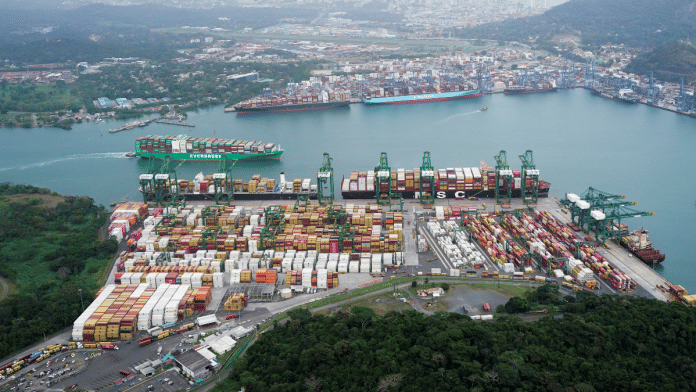Thank you dear subscribers, we are overwhelmed with your response.
Your Turn is a unique section from ThePrint featuring points of view from its subscribers. If you are a subscriber, have a point of view, please send it to us. If not, do subscribe here: https://theprint.in/subscribe/
US secretary of state Marco Rubio as his first official visit travelled to Panama last week. The SoS underlined the concerns expressed by President Trump of Chinese influence over the operation of the Panama Canal, the second busiest waterway in the world. The 82 km waterway, connecting the Pacific and the Atlantic oceans, was administered by the US after its completion in 1914 and was handed over to Panama in 1999 under the Treaty of permanent neutrality. President Trump since his election victory (not before that during his campaign) has threatened to take over the Panama Canal and hasn’t denied the use of force to achieve that. While the Panamanian president Jose Raul Mulino has reiterated that his country’s sovereignty over the canal is non-negotiable.
Chinese influence over Panama along with Latin America is increasing. Panama established its diplomatic ties with Beijing in 2017, rescinding its earlier recognition of Taiwan. This was followed by several other countries in the region like Dominican Republic (2018), El Salvador (2018), Nicaragua (2021) and Honduras (2023). Increasing Chinese investment through the BRI is a prominent reason for this. During his trip, Rubio warned that the US will take ‘measures necessary’ if Panama doesn’t take immediate steps to end China’s influence over the Panama Canal. As a result of it, President Mulino on Thursday announced Panama’s exit from BRI. The US department of state also announced that Panama will allow US government vessels to transit through the canal free of any charge, but the Panamanian side later denied it. It is to be seen in the coming years, whether this tough stance of US in the region will have any effects on other countries,
Mulino also agreed to review Chinese businesses in Panama, including the concession given to the Hongkong based CK Hutchison holding for the operation of both the ports on either entrances of the canal for 25 years renewed in 2021, pending an audit. China has become the second largest user of the canal through which 40% of all US container traffic passes. While the two ports Balboa (larger one) at the pacific coast and Cristobal (smaller but strategic) on the Atlantic coast are operated by Hutchison holdings, the control of the locks to the canal, and the canal’s operational control are with the Panama Canal Authority (ACP) as per testimonies given in US senate last month. The above-mentioned contract and the fact that the same was extended to the Chinese company without any other bids has alarmed the US. Experts have pointed out that in case of a hot conflict, Chinese access, influence and technical knowledge could be used to shutdown operations at these maritime chokepoints.
On January 28, the senate committee on Commerce, Science and Transportation held a hearing on the issue. Over there Daniel Maffei, commissioner of Federal Maritime Commission (FMC), listed other operations of Hutchison ports including the largest container port in UK, Felixstowe, major maritime ports in Argentina, Australia, Germany, Indonesia and many others. So, if owning and managing ports is taken as a strategic threat from China than all of us must be concerned about the Singapore straits, Mediterranean Sea and most importantly the Suez Canal. Therefore, the question is are we understating the Chinese threat or perhaps the US must look at other factors in the Panama Canal that are leading to higher costs on consumer goods for US citizens.
There were concerns raised at the hearing regarding the drought conditions in the Canal in previous years and how Panama, despite making record revenues hasn’t invested much in freshwater flows in the canal. Panama isn’t a sea level canal but uses precipitation at the Gatun Lake, the reservoir that feed freshwater in the canal locks. The El Nino conditions in 2023, could have made it possible to predict the drought conditions which led to reduced transits and increase in costs. Joseph Kramek, President & CEO of World Shipping council testified at the hearing that Panama did the best to anticipate the drought with the “information it had”. This leads us to the phenomenon of ‘Flash droughts’ which has emerged recently. These are completely opposite to flash floods and are a direct result of human induced climate change, a science denied by the current US administration.
Along with the control of the ports, the senators discussed China constructing a bridge over the Panama Canal which can be a decade long project. Transition of the Iranian dark fleet was also raised. While US investing in a second reservoir for the canal was talked about, no one pointed out that such an investment is nothing but an investment in an adaptation project for US consumers’ benefit, while we talk about investing in adaptation projects in the developing countries to save lives.
These pieces are being published as they have been received – they have not been edited/fact-checked by ThePrint


